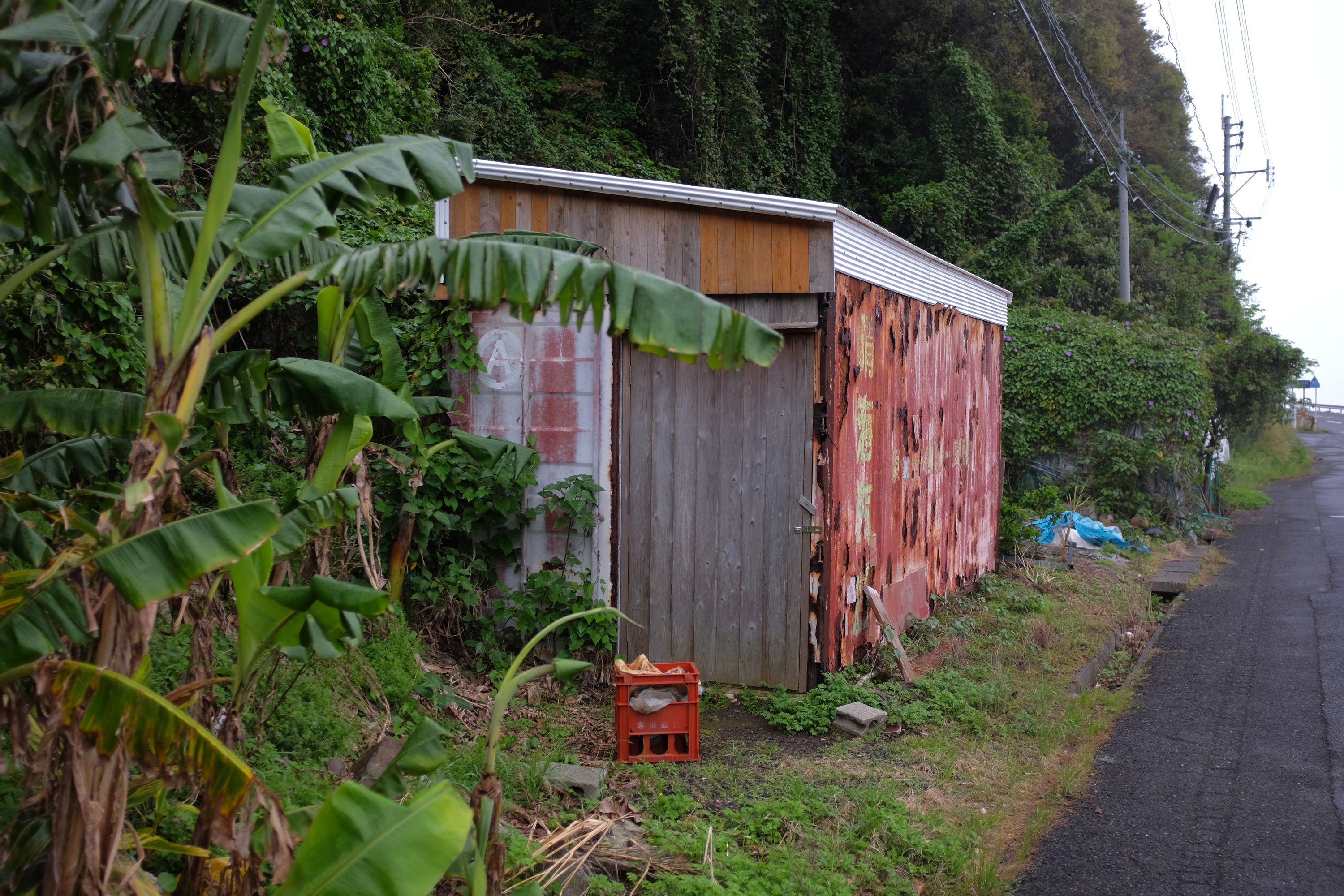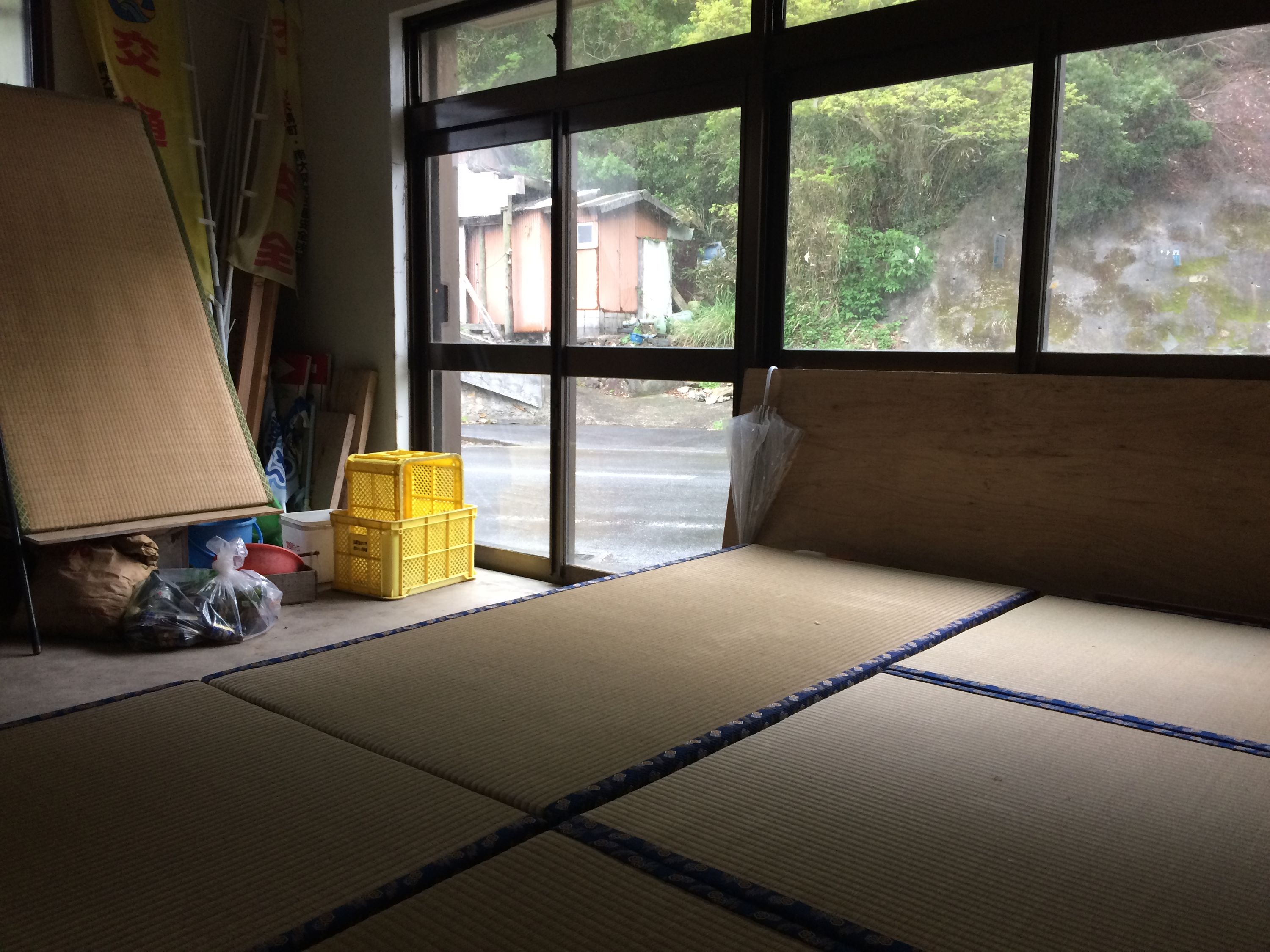Day 8 (April 20, 2017)
Sata, Kagoshima → Cape Sata → Satakori, Kagoshima
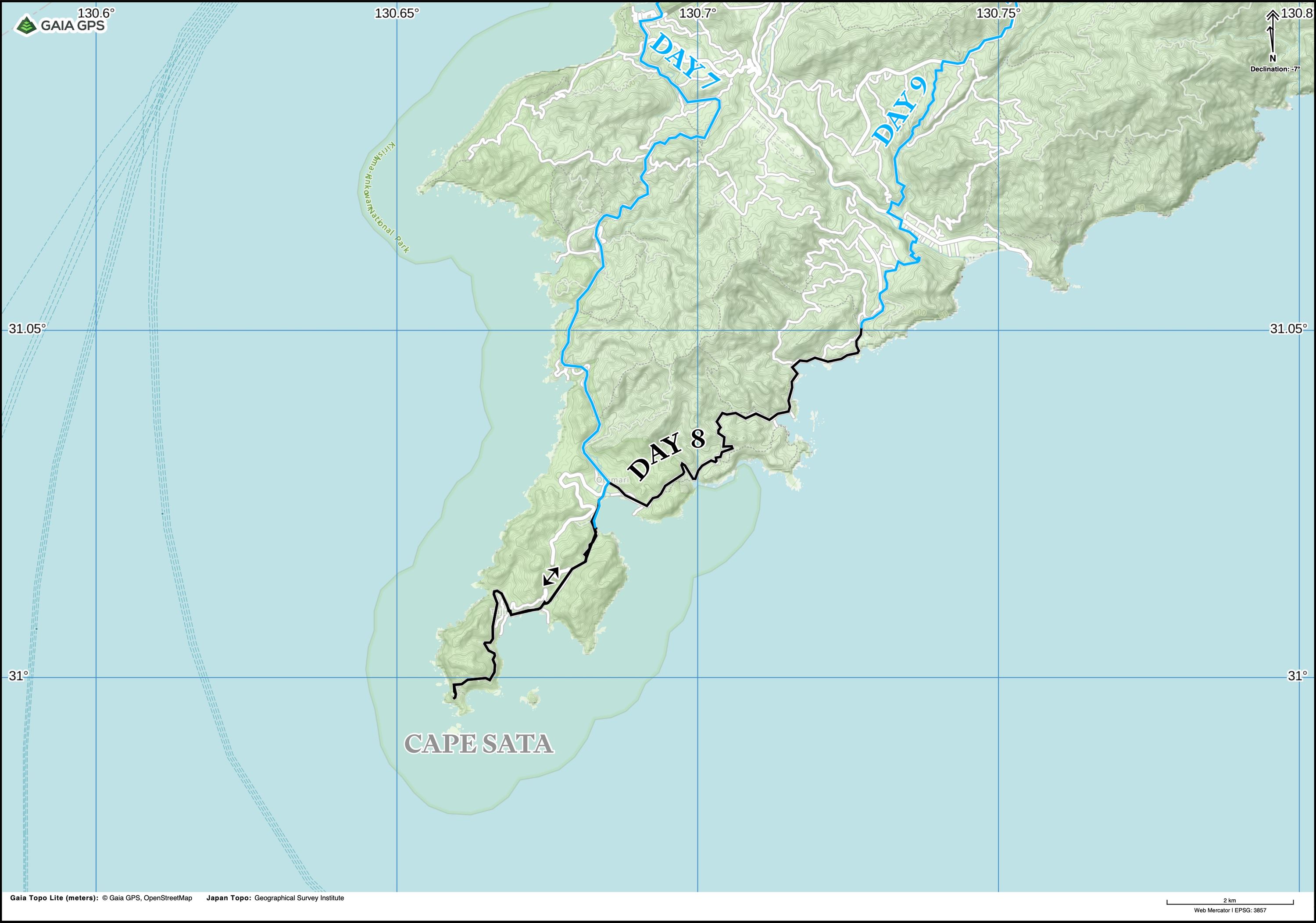

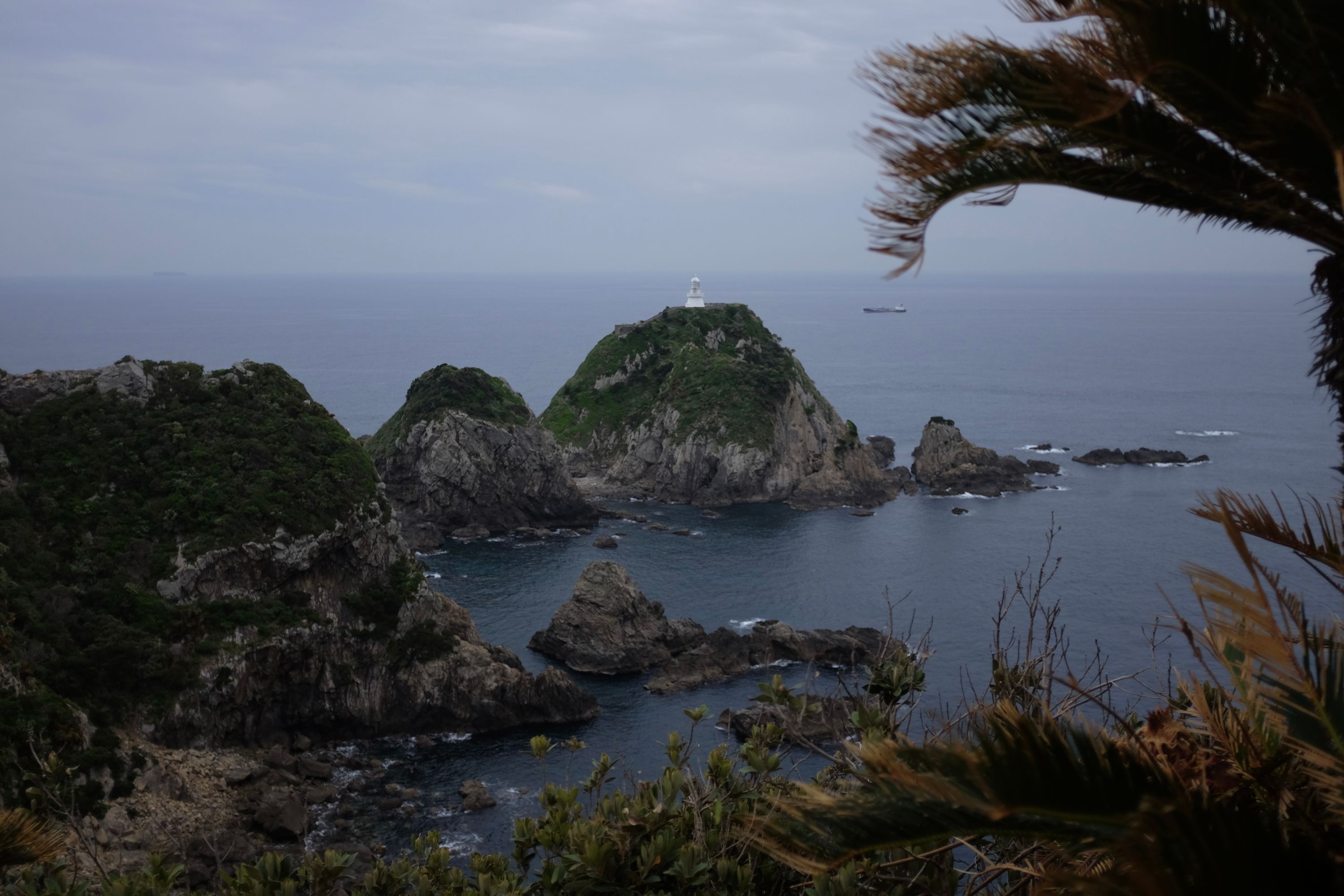
Two years ago, in a package sent from Phnom Penh by my friend Gergő Plankó, I received a copy of The Roads to Sata, the story of Alan Booth’s 1977 walk from the northernmost tip of the Japanese mainland, Cape Sōya, to here, the lighthouse at Cape Sata. Moments after I arrived, a small and haggard wild boar popped out of the jungle, glanced at me, then disappered down the vertical hillside with a grunt. I sat for an hour, looking out over the Pacific, the ferries from Kagoshima riding the waves to the south, the mountains of Yakushima emerging from the mist, then I turned around to retrace Booth’s steps to Cape Sōya.
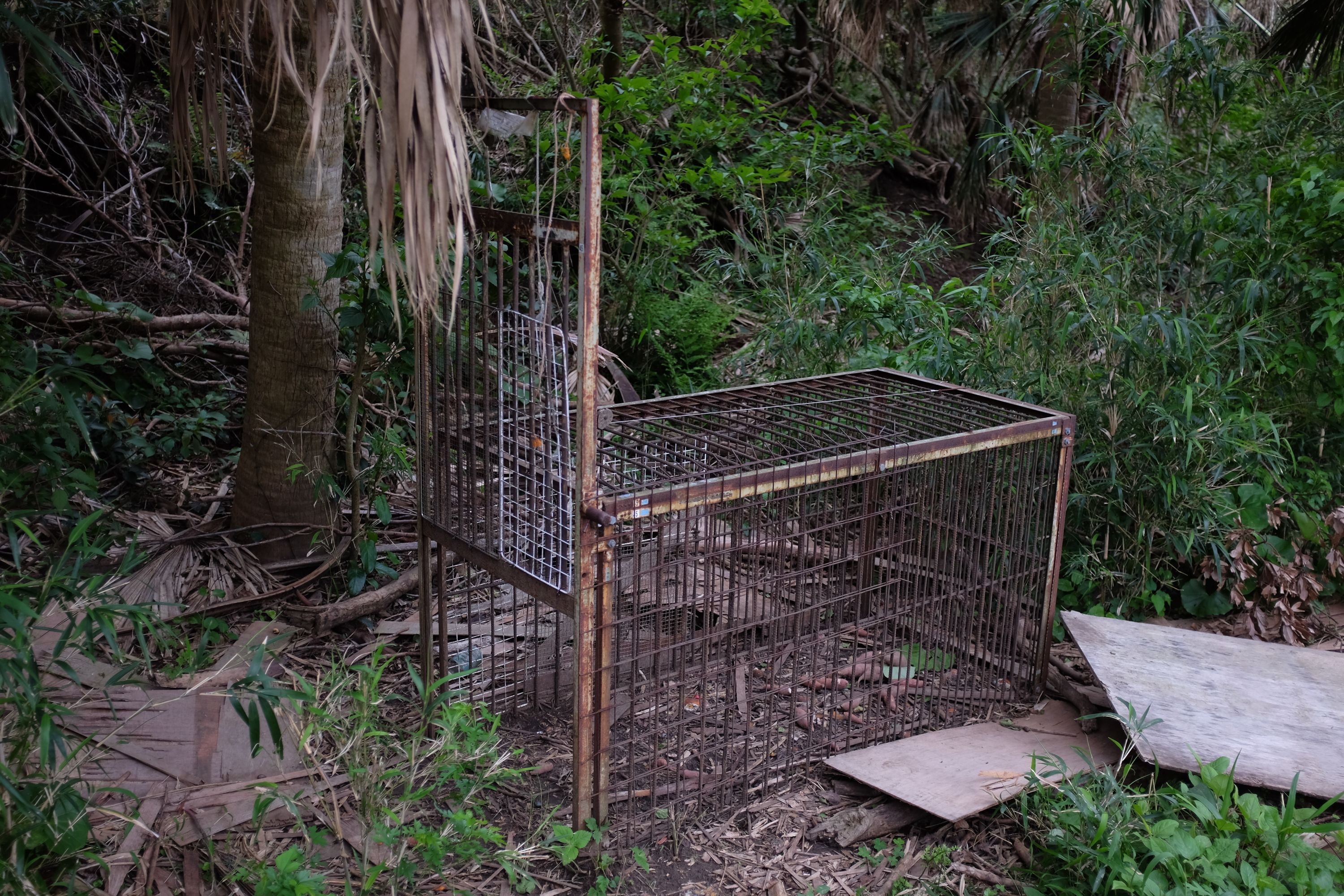
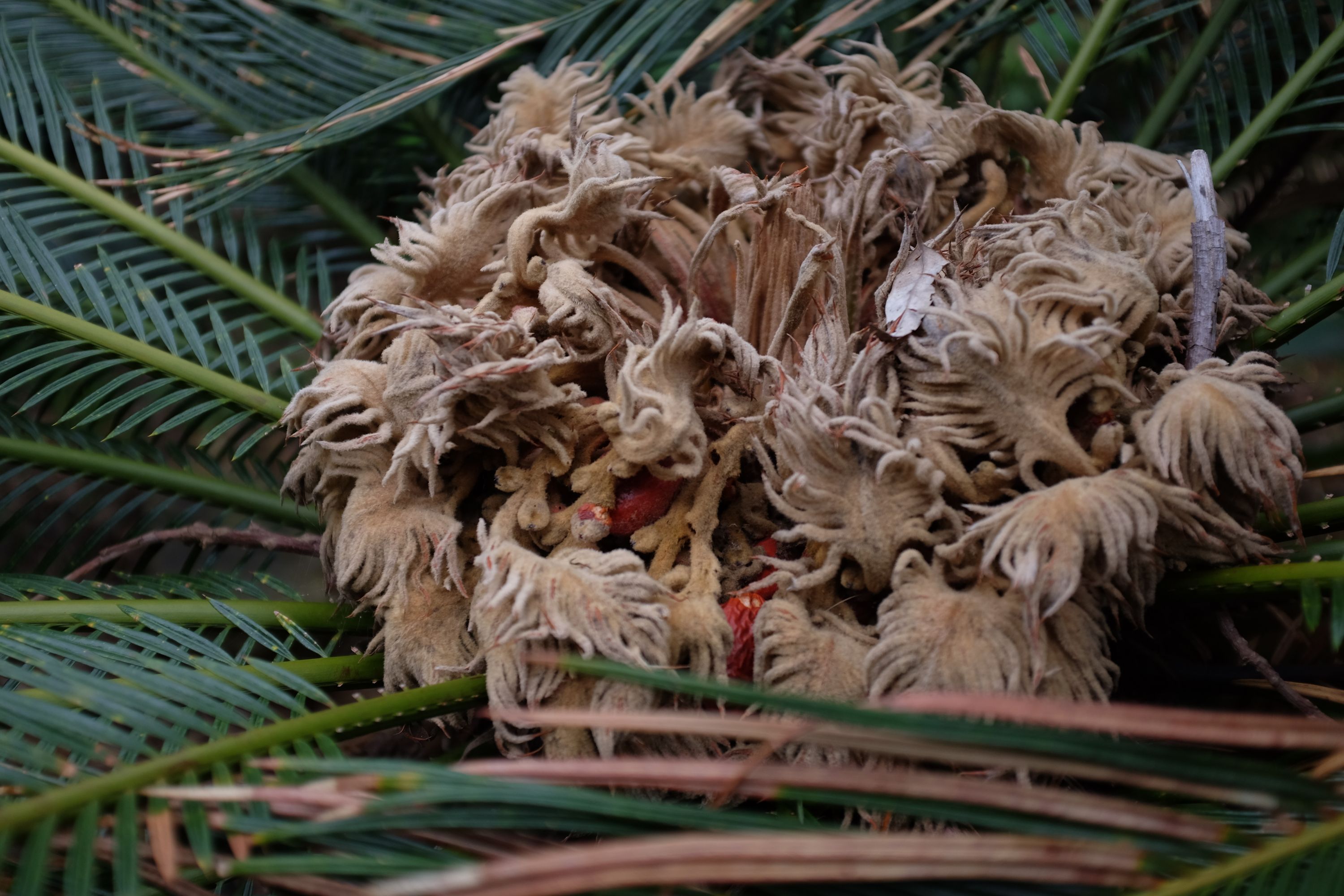
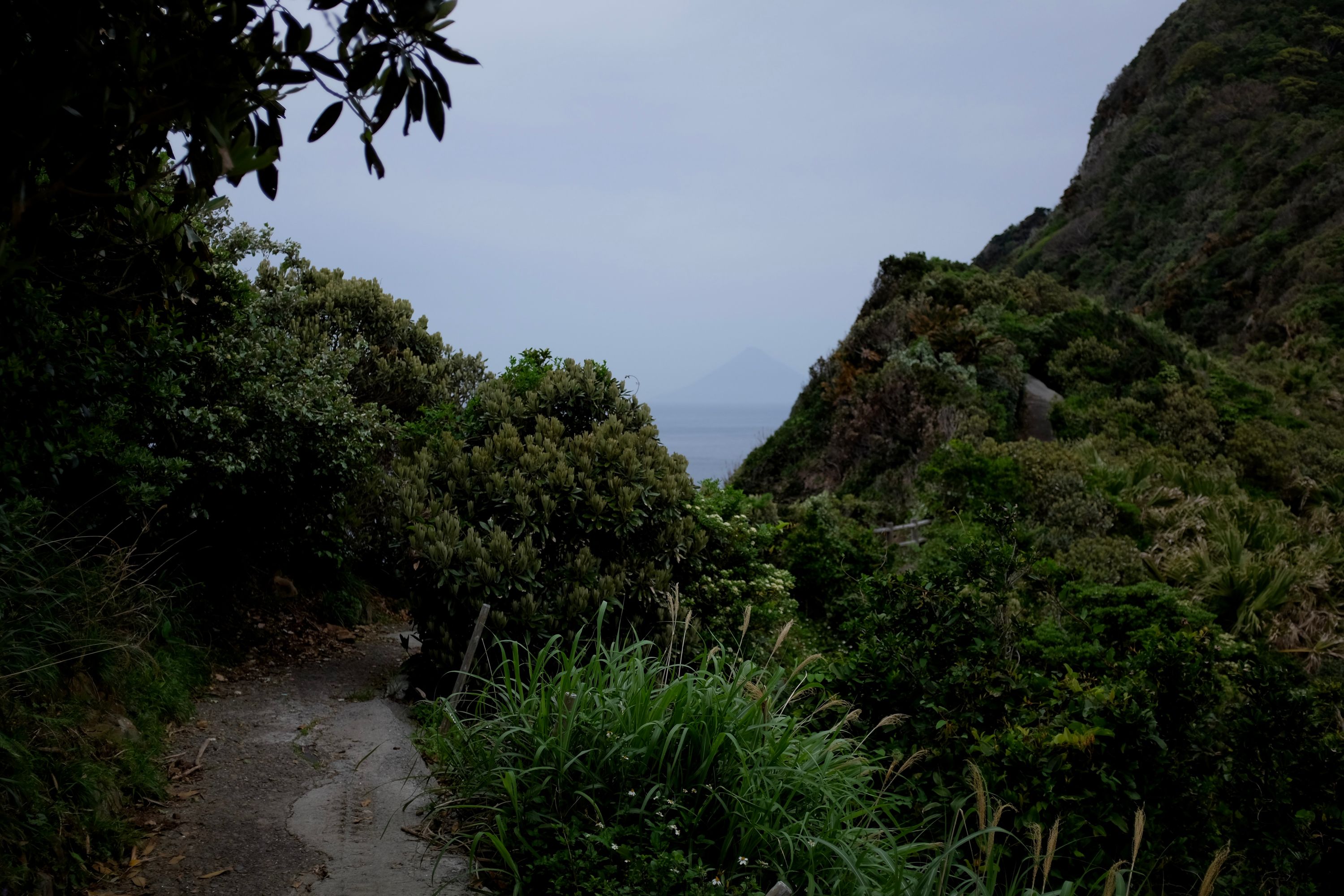
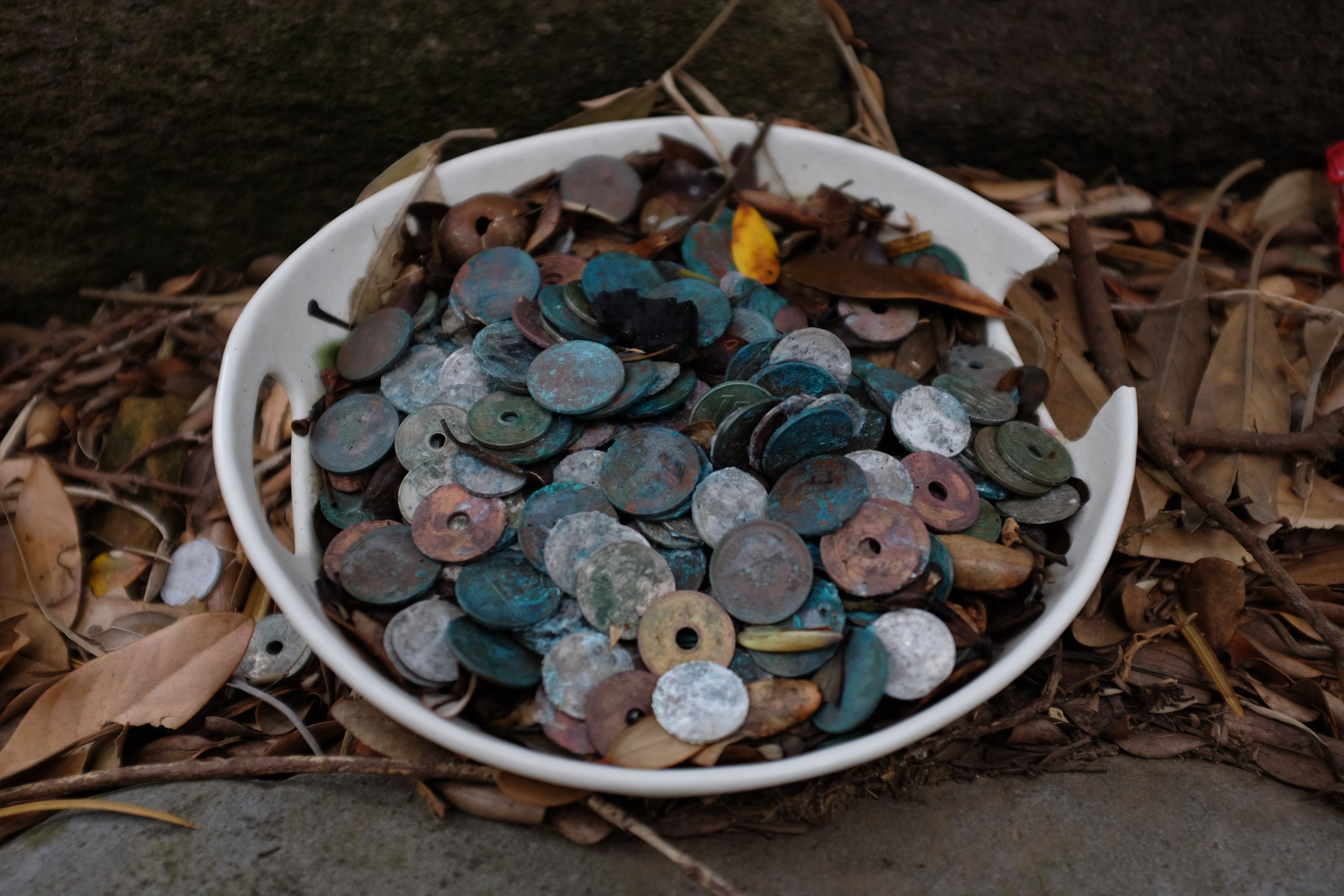
Coins left for the gods of the jungle and the sea, melting away in the humid, salty air at the first shrine on the road from Cape Sata. On the path there, for a single moment, I caught a last glimpse of Mount Kaimon.

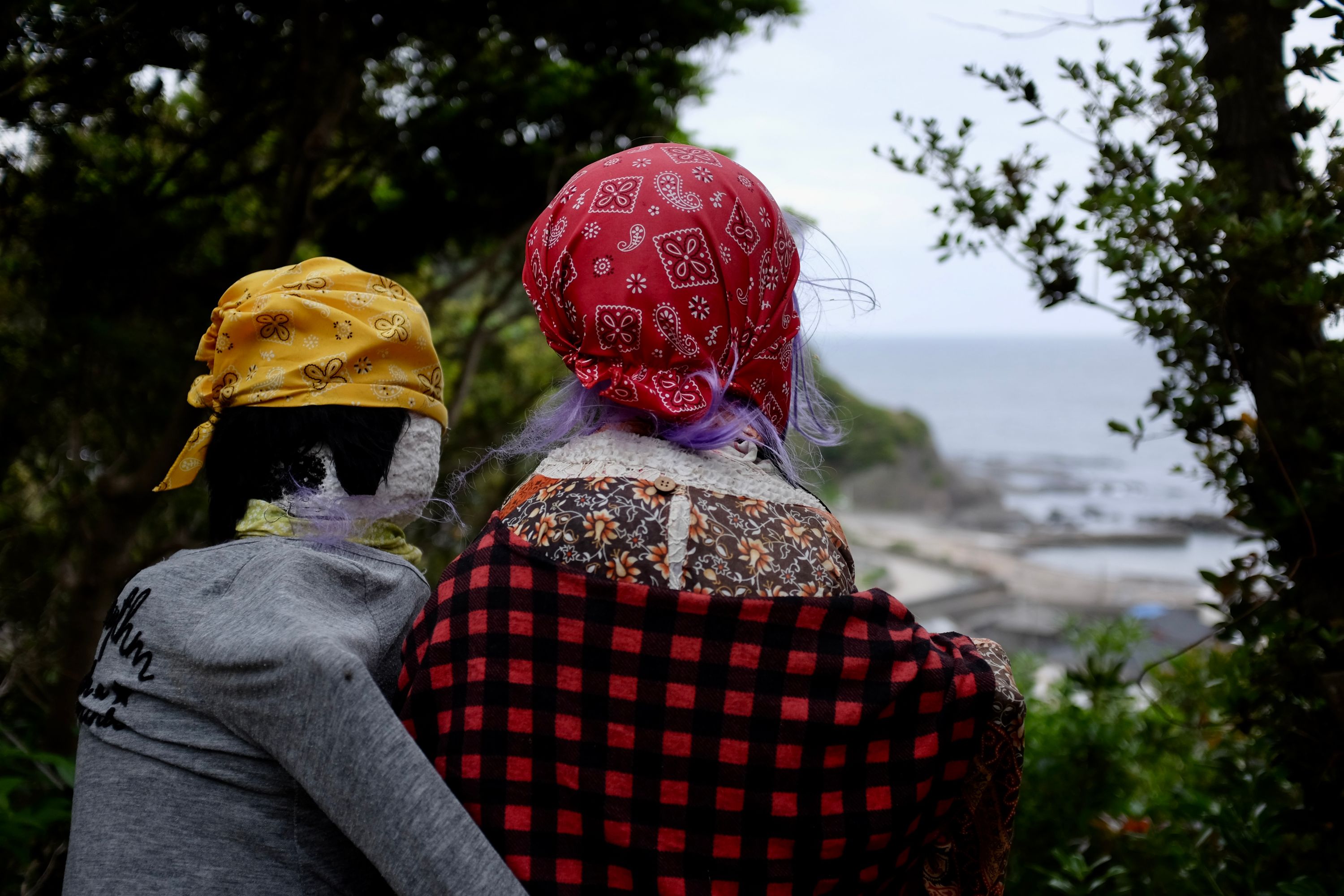

Like in Nagoro, the village on Shikoku which became famous for its dolls representing the departed and the dead thanks to Fritz Schumann’s documentary short The Valley of Dolls, a couple looks out over Satakori and beyond, at the grey Pacific. Three villages further up the remote south coast of the Ōsumi Peninsula, I escaped into an empty house from the rain and lay on the tatami mats for 14 hours. It rained all night, the ocean winds throwing gusts of spray against my windows.

